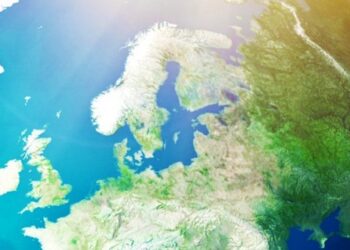Polaris, as being the newest addition to Finland’s fleet, is the first icebreaker that runs on LNG, a lower-carbon alternative to the diesel fuel which powers most large ships. The icebreaker is keeping shipping lanes open for about six months, enabling the voyage of cargo ships that carry steel, paper products and chemicals in and out of the ports serving northern Finland and neighbouring Sweden.
Mainly, the vessel navigates through the northernmost area of the Baltic, which is thought to be one of the most polluted seas globally.
Yet, Polaris Captain, Pasi Jarvelin, supports that the vessel is the most eco-friendly icebreaker in the world. He, also, quoted:
We don’t release anything into the sea, such as shower water, grey water — we take that back to land. And the propellers use biodegradable grease.
Although the bridge shakes gently, the thick windows cut out the noise of the howling winds on deck and metallic clanging of ice against the reinforced steel hull.
The icebreaker’s environmentally-friendly features are of a big importance as the region’s pristine white ice hides waters have been singled out by the European Commission and WWF, as in urgent need of action to reduce high levels of pollution.
Moreover, concerning the area’s pollution, very little outside water flows into or out of the Baltic Sea, almost completely enclosed by nine countries including Russia, Germany and most Nordic states.
Consequently, chemicals produced by agriculture and other industry remain trapped in the water in increasingly strong concentrations.
In addition, Polaris was filled up with gas from the newly built Manga LNG terminal, a storage facility perched at the end of a barren, snow-swept harbour in Tornio, northern Finland.
In tough conditions, Polaris can switch its engines to diesel.




























































